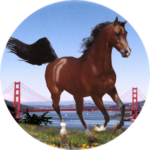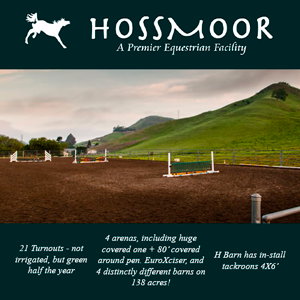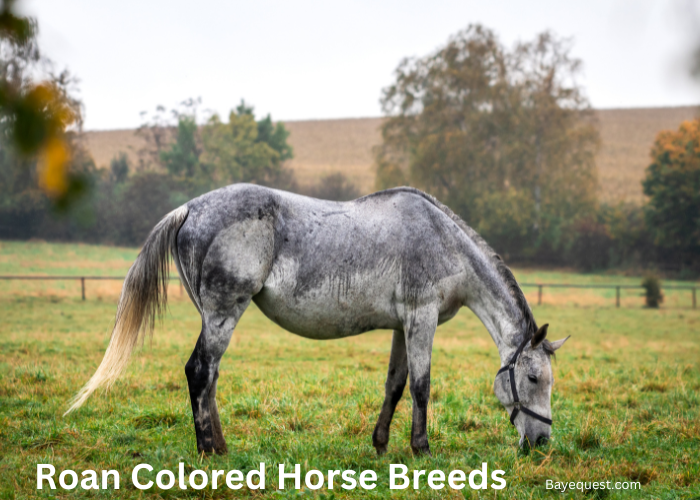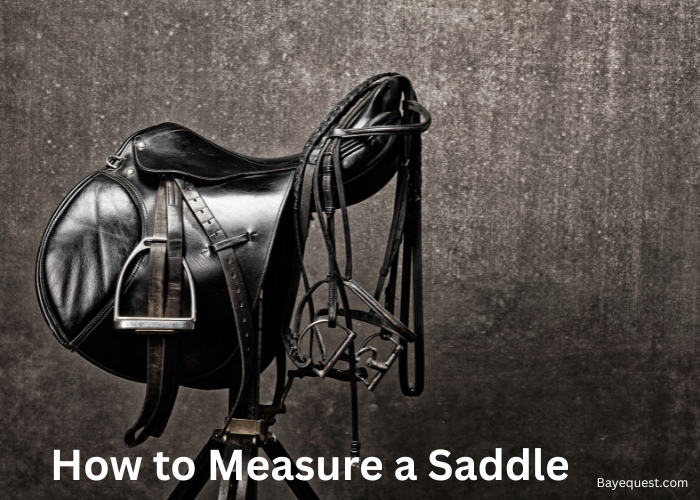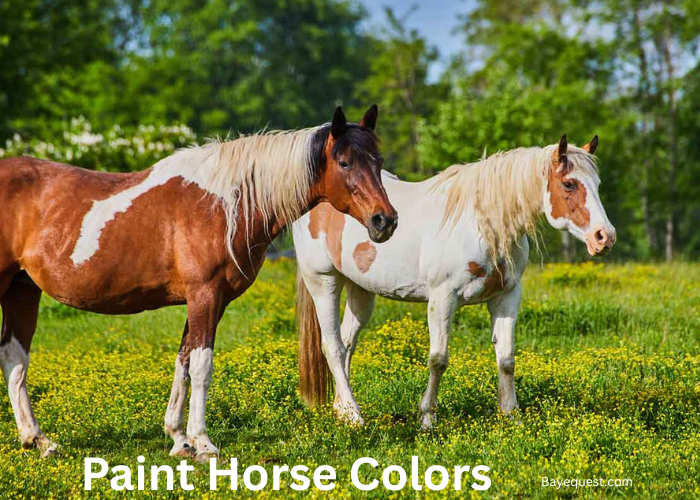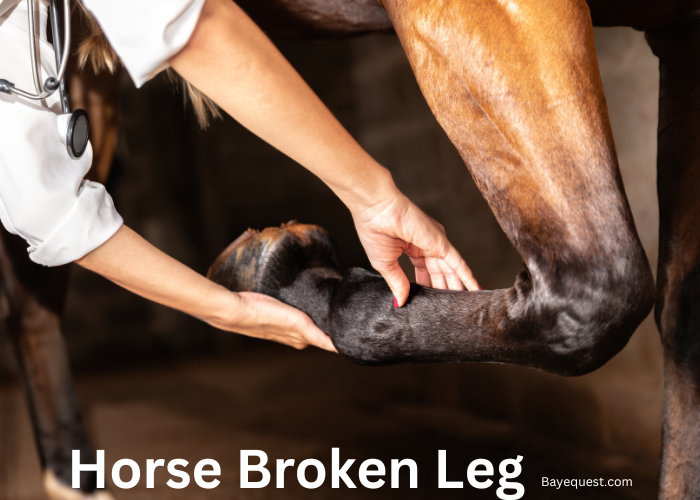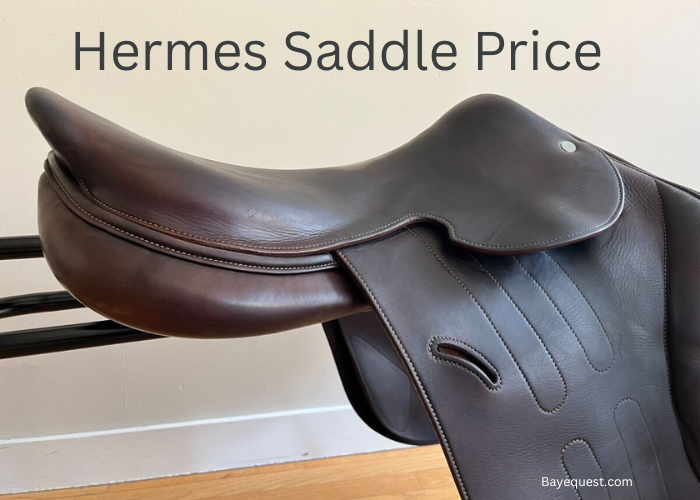Some horses turn gray with age. Others stay the same color for life.
But roan horses? They keep you guessing. Their coats are a perfect mix of white and solid hairs, creating a stunning, dusted look.
Blue roans look like they walked through smoke. Red roans glow like autumn leaves.
Bay roans? They have a soft, faded beauty.
Unlike grays, roans don’t lighten over time—they stay bold and beautiful.
Want to know which breeds can have this unique color? Let’s explore the incredible world of roan colored horse breeds.
What is a Roan Horse?
A roan horse has a unique coat with a mix of white hairs evenly blended with a solid base color.
Unlike gray horses, which lighten with age, roans keep their striking contrast throughout life.
Their head, lower legs, and mane usually stay darker, while the body gets that classic dusted or frosted look.
Roan isn’t just a single color—it comes in different shades like blue roan (black base), red roan (chestnut base), and bay roan (bay base).
This color pattern is genetic, passed down through a dominant roan gene. It makes these horses stand out in any herd.
What Causes Roan?
Roan coloring is caused by a dominant roan gene (Rn) that affects a horse’s coat by evenly mixing white hairs with a solid base color.
This genetic trait is inherited, meaning at least one parent must carry the roan gene for a foal to be roan.
Unlike gray horses, which lighten over time, roan horses maintain their distinct blend of white and colored hairs throughout life.
However, their coat may appear darker in winter and lighter in summer due to shedding.
Interestingly, the roan gene doesn’t affect the mane, tail, or lower legs, which usually stay the horse’s base color, creating that classic roan look.
Different Roan Colored Horse Breeds
Let’s take a closer look at the different types of roan-colored horse breeds and what makes them special.
Blue roan
A blue roan has a black base coat mixed with white hairs, giving it a smoky, steel-blue appearance.
Their mane, tail, and lower legs stay black, creating a striking contrast. Blue roans can sometimes be mistaken for grays, but unlike gray horses, they don’t lighten with age.
Their dark coat stays consistent, with subtle seasonal changes.
Blue roans are commonly found in breeds like the American Quarter Horse, Percheron, and Tennessee Walking Horse.
Read also: Unique Blue Roan Horse Names.
Red roan
A red roan has a chestnut base coat mixed with white hairs, creating a warm, reddish-pink look.
Their mane and tail can be red, flaxen, or mixed, while their lower legs often remain darker.
This coat shines especially in summer when the white hairs catch the light. Red roans are popular in breeds like the Quarter Horse, Belgian Draft, and Paso Fino.
Some registries call them “strawberry roans,” though the term is less common today.
Bay roan
A bay roan has a bay base coat, meaning a mix of brown with black points on the mane, tail, and legs.
White hairs spread across the body, giving it a dusted, faded appearance. Bay roans can sometimes be mistaken for red roans, but their darker points set them apart.
This color is seen in breeds like the American Quarter Horse, Mustang, and Standardbred.
Just like other roans, their coat stays consistent throughout life, making them easy to recognize.
Roan Horse Breeds
Roan horses come in many shapes and sizes. Some are strong and powerful, while others are light and graceful.
What they all have in common is their unique coat—a mix of white hairs blended into a solid color. This makes them look like they’ve been dusted with frost.
Let’s look at some of the most eye-catching roan horse breeds.
American Quarter Horse
The Quarter Horse is fast, strong, and one of the most popular roan breeds. It comes in blue, red, and bay roan, all recognized by the American Quarter Horse Association.
These horses are quick on their feet, making them perfect for rodeo events and ranch work.
Whether they’re cutting cattle or sprinting in a race, roan Quarter Horses always look stunning in motion.
Belgian Draft Horse
If you think roan is only for sleek, fast horses, think again. The Belgian Draft is a massive workhorse, and roan coats only add to its grand appearance.
Red roan is the most common, making these giants look like they’ve been dipped in strawberry milk.
They are strong but gentle, often seen pulling heavy loads with ease. Whether in the fields or at pulling competitions, a Belgian roan is hard to miss.
Percheron
Percherons are big, elegant, and built to work. While black and gray are more common, some Percherons carry the roan gene.
Their thick coats make the white hairs blend beautifully, giving them a soft, faded look. These horses were once used in war and later in farming.
Today, they still work hard but also shine in parades and carriage rides. A roan Percheron is a rare sight, but when you see one, you won’t forget it.
Mustang
Mustangs are wild at heart, and some carry the roan gene. You can find blue, red, and bay roans roaming free in the American West.
Their roan coats help them blend into the rocky landscape, making them harder to spot from a distance.
Unlike other breeds, no one planned for Mustangs to be roan—it just happened naturally.
That’s what makes them special. Every roan Mustang is a little piece of history running free.
Paso Fino
Paso Finos are small but mighty. They have a smooth, natural gait that makes riding feel like floating.
Roan is rare in this breed, but when it appears, it’s breathtaking. The way these horses move makes their coats shimmer in the sunlight.
A roan Paso Fino isn’t just beautiful—it’s a showstopper. If you want a horse that looks like it’s dancing while covered in a dusting of magic, this is the one.
Tennessee Walking Horse
If you love a smooth ride, the Tennessee Walking Horse is for you. These horses are known for their famous “running walk,” which is as comfortable as a rocking chair.
Roan is not the most common color, but it does appear in some bloodlines. A roan Tennessee Walker gliding across a field is a sight to behold.
The mix of white hairs catches the light, making it look like they’re glowing as they move.
Appaloosa (Roan Lookalikes)
The Appaloosa is best known for its spots, but some have a roan-like pattern called varnish roan.
Unlike true roan horses, these Appaloosas get lighter with age, especially around their face and legs.
They may not be “real” roans, but they still turn heads. With their unique coat patterns and bold personalities, Appaloosas always find a way to stand out.
Gray Vs Roan
Gray and roan horses may look similar, but they are completely different.
Gray horses are born with a solid coat and lighten over time. A dark gray foal can turn nearly white with age.
Some develop dapples or fleabites, but all gray horses fade as they grow older.
Roan horses keep their color for life. Their coat is a mix of white hairs with a solid base, but their mane, tail, and lower legs stay dark.
Roans may look slightly lighter in summer and darker in winter, but they don’t fade like grays.
A key difference is how their coats react to injuries. A gray’s hair grows back white, while a roan’s grows back in its base color, creating dark patches.
Grays change over time, while roans keep their unique frosted look. Both are stunning, but one is a constant, and the other is always evolving.
Dun Vs Roan
Dun and roan horses both have unique coat colors, but they are very different.
A dun horse has a solid base coat with a special gene that adds a slight dusty or golden tint. The biggest giveaway is the dorsal stripe—a dark line running down the back.
Many also have leg barring (faint stripes on the legs) and a darker face. Common dun shades include bay dun, red dun, and grulla (mouse-gray dun).
A roan horse, on the other hand, has white hairs mixed evenly into its coat but keeps its original color on the mane, tail, and legs.
Roans come in blue (black base), red (chestnut base), and bay roan. Unlike duns, they don’t have a dorsal stripe or primitive markings.
Another key difference? Roans keep their color for life, while duns can darken or fade slightly with age.
Both are striking, but one has a frosty blend, and the other has bold markings.
See also: Dun Versus Buckskin Horse.
Rabicano Vs Roan
Rabicano and roan horses both have white hairs mixed into their coat, but they are completely different patterns.
A roan horse has white hairs evenly spread across its entire body, except for the mane, tail, and lower legs, which stay solid.
This creates a frosted look that stays the same for life. Roan comes in blue, red, and bay roan, and the color doesn’t increase with age.
A rabicano horse, however, has white hairs concentrated around the flanks, belly, and base of the tail—often called a “skunk tail.”
Unlike roans, the white hairs don’t cover the whole body and are more patchy. Rabicano markings can spread over time, but they never fully change a horse’s base color.
The easiest way to tell them apart? If the whole body has a frosted look, it’s roan. If the white hairs are mostly on the flanks and tail, it’s rabicano.
Sabino Vs Roan
Sabino and roan horses both have white hairs mixed into their coat, but they are completely different patterns.
A roan horse has white hairs evenly spread across the entire body, except for the mane, tail, and lower legs, which stay the solid base color.
Roans keep their pattern for life, though their coat may appear darker in winter and lighter in summer.
They come in blue, red, and bay roan, and their white hairs do not form patches or irregular markings.
A sabino horse, on the other hand, has a white spotting pattern that can range from small flecks to large, irregular patches.
Sabino markings often include white on the legs, belly, and face, sometimes blending into roan-like areas.
Unlike true roans, sabinos can have high stockings, jagged edges, and even near-total white coats in extreme cases.
The easiest way to tell them apart? Roans have an even dusting of white hairs, while sabinos have more irregular white patches and markings.
Varnish Roan Vs Roan
Varnish roan and true roan might look similar at first, but they are very different in how they develop and appear over time.
A true roan horse has white hairs evenly mixed into its coat, giving it a frosted look. The mane, tail, and lower legs stay the solid base color.
Roans are born with their color and keep it for life, though their coat may look darker in winter and lighter in summer.
If they get a cut or scrape, the hair grows back in the base color, leaving dark patches.
A varnish roan, found in Appaloosas, is caused by the Leopard Complex gene and changes over time.
Instead of a consistent pattern, varnish roans develop lighter and darker areas, often around bony areas like the face, hips, and legs. Their white hairs increase as they age, unlike true roans, which stay the same.
True roans have an even mix of white and color, while varnish roans have a more patchy, shifting pattern that changes over time.
Roan Horse Color Facts
Let’s explore some fascinating facts about these eye-catching horses.
1. Roans keep their color for life. Unlike gray horses, roans don’t fade to white over time. Their coat stays a consistent mix of white hairs and their base color.
2. They come in three main shades. Roan horses are usually blue roan (black base), red roan (chestnut base), or bay roan (bay base).
3. Mane, tail, and legs stay dark. While the body is mixed with white hairs, the mane, tail, and lower legs remain the base color, making roans easy to recognize.
4. Their coat can change seasonally. Roans often look darker in winter when their thicker coat grows in and lighter in summer as they shed.
5. Injuries grow back in the base color. If a roan gets a cut, the new hair usually grows back in its solid base color, leaving dark spots on the coat.
6. Roan is a dominant gene. A horse must inherit the roan gene from at least one parent to be roan. If neither parent is roan, the foal won’t be roan.
7. Roans can be found in many breeds. Some of the most common roan horse breeds include the American Quarter Horse, Belgian Draft, Mustang, and Percheron.
8. They are often mistaken for other patterns. Roan horses can be confused with gray, rabicano, sabino, and varnish roan horses, but each pattern is genetically different.
9. Their color can look brighter when groomed. A clean, well-groomed roan horse often looks even more striking because the white hairs shimmer in the sunlight.
Roan Colored Horse Breeds: Conclusion
Roan horses are truly one of a kind. Their unique mix of white and solid hairs gives them a frosted, dusted look that stands out.
Unlike gray horses, their color stays the same for life. Whether blue, red, or bay roan, each one has its own charm.
Roan coats can be found in many breeds, from fast Quarter Horses to strong Belgian Drafts.
Their beauty isn’t just skin deep—they are hardworking, versatile, and eye-catching. If you love a horse with a bold and timeless look, a roan might be the perfect choice.
